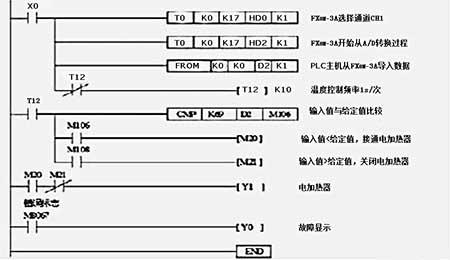In industrial automation, Mitsubishi Programmable Logic Controllers (PLCs) play a crucial role in controlling various processes. Utilizing modular programming techniques with Mitsubishi PLCs offers several advantages, including improved organization, scalability, and maintenance efficiency. Let's delve into the concept of modular programming and how it applies to Mitsubishi PLCs.
Modular programming is a software design technique that emphasizes breaking down a program into smaller, manageable modules or functions. Each module serves a specific purpose and can be developed, tested, and maintained independently. This approach promotes code reusability, readability, and simplifies the debugging process.
1.
Modular programming allows PLC programs to be structured into logical modules based on functionality. For instance, you can create separate modules for input/output handling, motor control, communication protocols, etc. This organization enhances program readability and facilitates easier troubleshooting and debugging.
2.

By dividing the PLC program into modules, it becomes easier to scale the system as needed. New functionality can be added by simply integrating new modules into the existing program structure without affecting the entire system. This scalability is vital in adapting PLCbased automation systems to changing production requirements.
3.
In largescale industrial applications, maintenance and troubleshooting are ongoing tasks. Modular programming simplifies these processes by isolating faults to specific modules, thereby reducing the time and effort required to identify and rectify issues. Additionally, modular programs are easier to update and modify without risking the integrity of the entire system.
4.
Modular programming promotes code reusability by encapsulating common functionalities into reusable modules. These modules can be employed across multiple projects, saving development time and ensuring consistency in programming practices. Moreover, reusable modules undergo rigorous testing, which enhances the reliability of the overall system.
1.
Plan the program structure meticulously, identifying distinct functional units that can be encapsulated into modules. Each module should have a welldefined interface and perform a specific task.
2.
Adopt clear and consistent naming conventions for modules, variables, and functions to enhance program readability and maintainability. Descriptive names should reflect the functionality of each module accurately.
3.
Encapsulate the implementation details within each module, providing a clear interface for interaction with other parts of the program. This promotes abstraction, where the internal workings of a module are hidden, and only essential functionalities are exposed.
4.
Test each module individually to ensure its functionality and compatibility with other modules. Implement thorough validation procedures to detect and rectify any errors or inconsistencies in the program.
5.
Document the purpose, inputs, outputs, and usage guidelines for each module comprehensively. This documentation aids in understanding the program structure, facilitates collaboration among developers, and streamlines maintenance activities.
Modular programming is a powerful technique for developing robust and maintainable PLC programs, especially with Mitsubishi PLCs. By dividing the program into manageable modules, industrial automation systems can achieve improved organization, scalability, maintenance efficiency, and code reusability. Adopting structured design practices, clear naming conventions, encapsulation, rigorous testing, and thorough documentation are essential for successful implementation of modular programming with Mitsubishi PLCs. This approach not only enhances the performance and reliability of automation systems but also simplifies their development and maintenance lifecycle.
文章已关闭评论!
2024-11-26 16:41:32
2024-11-26 16:40:23
2024-11-26 16:38:51
2024-11-26 16:37:43
2024-11-26 16:36:30
2024-11-26 16:35:06
2024-11-26 16:33:34
2024-11-26 16:32:12